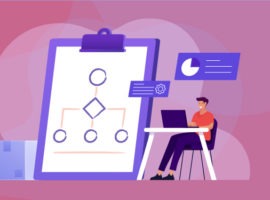The future of work after COVID: Employees spur Great Resignation
 The future of work after COVID demands that employers rethink their approach to the employee experience, as The Great Resignation proves.
The future of work after COVID demands that employers rethink their approach to the employee experience, as The Great Resignation proves.
In today’s super competitive business environment, companies are under pressure to find and keep the best talent. They also need to get the best performance out of their talent investment. This is where performance management software comes in.
Whether you’re a small businesses or large enterprise, how do you know which performance management software is right for you? Here are some features and functions to look for when shopping for performance management tools for your HR department.
 The future of work after COVID demands that employers rethink their approach to the employee experience, as The Great Resignation proves.
The future of work after COVID demands that employers rethink their approach to the employee experience, as The Great Resignation proves.
Here are some benefits and advantages your company can expect when choosing a solution:
The very best performance management systems create a close link between successful employees and successful companies.
It’s about reaching a common understanding between employer and employee about what “good” looks like and how an employee can contribute to the organization’s overall success. It links higher employee performance standards with better business results and overall employee experience.
Talent management and performance management are both responsibilities of HR, but focus on different things. Talent management addresses all aspects of the employee lifecycle, including recruiting, onboarding, performance, compensation, learning, succession, and development planning. Performance management is part of that overall employee journey.
A performance management system gives employees regular, candid feedback on how they’re performing against their individual goals and evolving those objectives as they’re reached or become irrelevant due to changing business priorities.It’s also a means of giving constant and job-specific coaching in between major reviews. Practically speaking, your performance management system might include a few different, interconnected processes and documents, such as:
What you use will depend on your organizational structure and job-specific skills. In most companies, the above processes run on a yearly cycle. You list an employee’s achievements and set objectives with them at the start of the year, and 12 months later sit down with them and analyze how they’ve done, plus set new objectives for the coming year.
However, many big brands prefer more regular performance reviews, as frequently as every quarter. By shortening the performance management cycle, it allows employers to get closer to their employees and avoid having issues fester for months.
To make the most of HR data, organizations are leveraging cloud-based performance management systems for real-time insight.
People analytics is a data-driven method for managing employees during the entire lifecycle. Some solutions are designed so any business unit can use real-time and data to serve its employees, and get a better understanding of what’s driving performance. These systems:
Using advanced analytical methods, you can easily convert a treasure trove of employee data into clear, actionable insights.
 HR cloud solutions provide intuitive, agile, innovative, and easy-to-use system designed around what employees need and how they work.
HR cloud solutions provide intuitive, agile, innovative, and easy-to-use system designed around what employees need and how they work.
Traditional human resources software streamlines various HR-related tasks using automation and customization features. An effective performance management system goes beyond the basic and drills down to deliver results through the following:
The top objective is to improve employee performance standards. But you can connect your performance management system to bonuses and pay reviews.
In this way, you can incentivize employees to be more engaged in performance management processes. Keep in mind, though, that financial reward is only one part of what drives employees to succeed and shouldn’t be the only reason to engage.